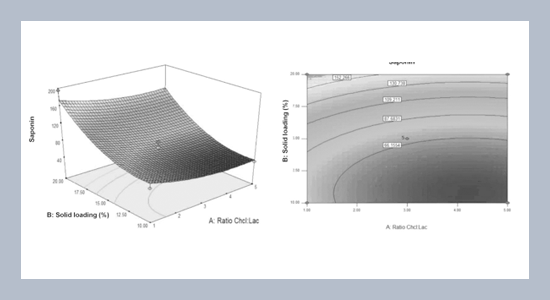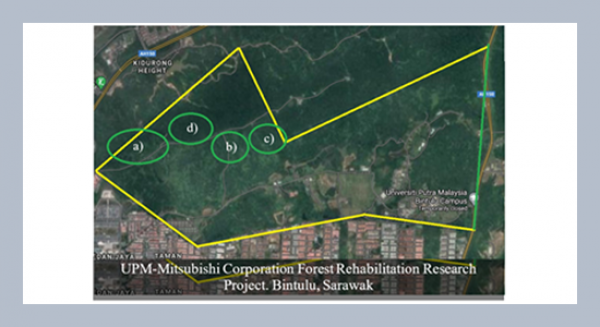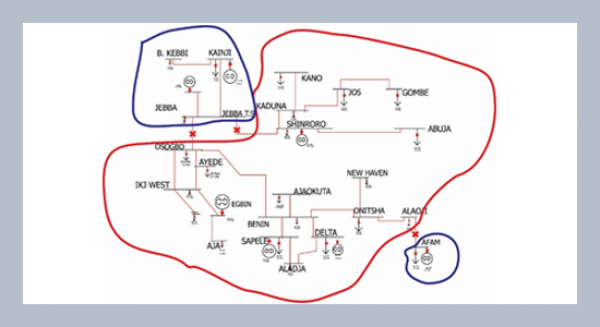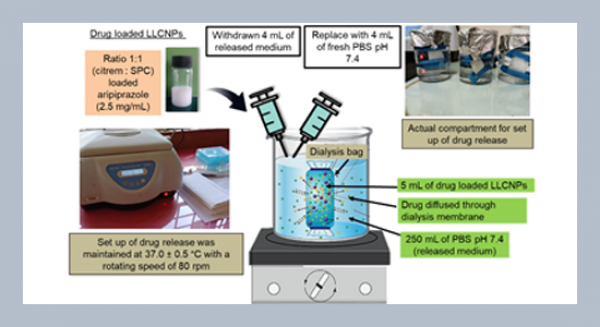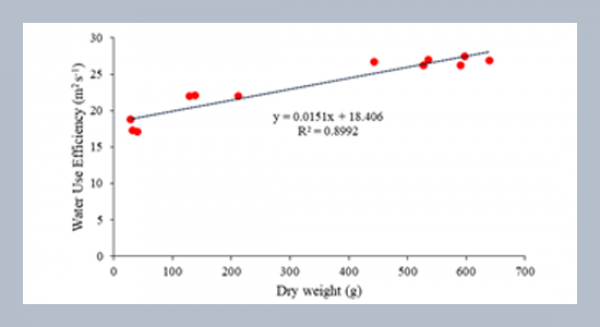REFERENCES
- Bermúdez-Oria, A., Fernández-Prior, A., Castejón, M.L., Rodríguez-Gutiérrez, G., Fernández-Bolaños, J. 2023. Extraction of polyphenols associated with pectin from olive waste (alperujo) with choline chloride. Food Chemistry, 419, 136073.
- Chen, S., Kang, J., Zhu, H., Han, Z., Wang, L., Wang, K., Liu, J., Wu, Y., He, P., Tu, Y, Li, B. 2024. Tea seed saponins ameliorate cyclophosphamide-induced intestinal injury, immune disorder and gut microbial dysbiosis in mice. Food Bioscience, 57, 103504.
- Chuetor S., Panakkal E.J., Ruensodsai T., Cheenkachorn K., Kirdponpattara S., Cheng Y.S., Sriariyanun M. 2022. Improvement of enzymatic saccharification and ethanol production from rice straw using recycled ionic liquid: The effect of anti-solvent mixture, Bioengineering, 9, 115.
- Deng, Y., Wang, X., Zhang, C., Xie, P., Huang, L. 2024. Enhanced and green extraction of saponins from Gleditsia sinensis Lam. Pods by ultrasound-assisted deep eutectic solvents: optimization and comprehensive characterization. Food and Bioprocess Technology, 1–20.
- Duan, L., Dou, L.L., Guo, L., Li, P., Liu, E.H. 2016. Comprehensive evaluation of deep eutectic solvents in extraction of bioactive natural products. ACS Sustainable Chemistry Engineering, 4, 2405–2411.
- Guo, J., Zhao, N., Zhao, Y., Jin, H., Sun, G., Yu, J., Zhang, H., Shao, J., Yu, M., Yang, D., Liang, Z. 2024. The extraction using deep eutectic solvents and evaluation of tea saponin. Biology, 13, 438.
- Guo, N., Tong, T., Ren, N., Tu, Y., Li, B. 2018. Saponins from seeds of Genus Camellia: Phytochemistry and bioactivity. Phytochemistry, 149, 42–55.
- Hatzis C., Riley C., Philippidis G. 1996. Detailed material balance and ethanol yield calculations for the biomass-to-ethanol conversion process. Applied Biochemistry and Biotechnology, 57, 443–459.
- Hou, Y.J., Wang, P.W., Zhang, H., Fan, Y.Y., Cao, X., Luo, Y. Q., Li, Q., Njolibimi, M., Li, W., Hong, B, Zhao, C.J. 2024. A high-permeability method for extracting purple yam saponins based on ultrasonic-assisted natural deep eutectic solvent. Food Chemistry, 457, 140046.
- Im, K.H., Nguyen, T.K., Choi, J., Lee, T.S. 2016. Ethanol production from various sugars and cellulosic biomass by white rot fungus Lenzites betulinus. Mycobiology, 44, 48–53.
- Jose, D., Tawai, A., Divakaran, D., Bhattacharyya, D., Venkatachalam, P., Tantayotai, P., Sriariyanun, M. 2023. Integration of deep eutectic solvent in biorefining process of lignocellulosic biomass valorization. Bioresource Technology Reports, 21, 101365.
- Lei, J., Wang, Y., Li, W., Fu, S., Zhou, J., Lu, D., Wang, C., Sheng, X., Zhang, M., Xiao, S., Sun, C., Wang, G. 2022. Natural green deep eutectic solvents based eco-friendly and efficient extraction of flavonoids from Selaginella moellendorffii: Process optimization, composition identification and biological activity. Separation and Purification Technology, 283, 120203.
- Li, T., Zhang, H., Wu, C. E. 2014. Screening of antioxidant and antitumor activities of major ingredients from defatted Camellia oleifera seeds. Food science and biotechnology, 23, 873–880.
- Liu, X., Wu, Y., Gao, Y., Jiang, Z., Zhao, Z., Zeng, W., Mingyu, X., Liu, S., Liu, R., Chao, Y., Nie, S., Zhang, A., Li, C., Xiao, Z. 2024. Valorization of Camellia oleifera oil processing byproducts to value-added chemicals and biobased materials: A critical review. Green Energy and Environment, 9, 28–53.
- Ma, X., Gao, M., Yin, Z., Zhu, W., Liu, S., Wang, Q. 2020. Lactic acid and animal feeds production from Sophora flavescens residues by Rhizopus oryzae fermentation. Process biochemistry, 92, 401–408.
- Mavai, S., Bains, A., Sridhar, K., Chawla, P., Sharma, M. 2024. Emerging deep eutectic solvents for food waste valorization to achieve sustainable development goals: Bioactive extractions and food applications. Food Chemistry, 141000.
- Mujtaba M., Fraceto L.F., Fazeli M., Mukherjee S., Savassa S.M., Medeiros G.A., Pereira A.E.S., Mancini S.D., Lipponen J., Vilaplana F. 2023. Lignocellulosic biomass from agricultural waste to the circular economy: A review with focus on biofuels, biocomposites and bioplastics, Journal of Cleaner Production, 402, 136815.
- Sriariyanun M., Mutrakulcharoen P., Tepaamorndech S., Cheenkachorn K., Rattanaporn K. 2019. A rapid spectrophotometric method for quantitative determination of ethanol in fermentation products. Oriental Journal of Chemistry, 35, 744–750.
- Tang, Y., He, X., Sun, J., Liu, G., Li, C., Li, L., Sheng, J., Zhou, Z., Xin, M., Ling, D., Yi, P., Zheng, F., Li, J., Li, Z., Yang, Y., Tang, J., Chen, X. 2021. Comprehensive evaluation on tailor-made deep eutectic solvents (DESs) in extracting tea saponins from seed pomace of Camellia oleifera Abel. Food Chemistry, 342, 128243.
- Tsegaye, K.N., Alemnew, M., Berhane, N. 2024. Saccharomyces cerevisiae for lignocellulosic ethanol production: a look at key attributes and genome shuffling. Frontiers in Bioengineering and Biotechnology, 12, 1466644.
- Wei, Z., Zhang, W., Du, M., Zhong, H., Fang, X. 2024. Widely targeted metabolomic and KEGG analyses of natural deep eutectic solvent-based saponins extraction from Camellia oleifera Abel.: Effects on composition. Food Chemistry, 450, 139333.
- Wu, L., Chen, Z., Li, S., Wang, L., Zhang, J. 2021. Eco-friendly and high-efficient extraction of natural antioxidants from Polygonum aviculare leaves using tailor-made deep eutectic solvents as extractants. Separation and Purification Technology, 262, 118339.
- Wu R., Li Y., Wang X., Fu Y., Qin M., Zhang Y. 2023. In-situ lignin sulfonation for enhancing enzymatic hydrolysis of poplar using mild organic solvent pretreatment. Bioresource Technology, 369, 128410.
- Yu, X., Zhao, Z., Yan, X., Xie, J., Yu, Q., Chen, Y. 2023. Extraction optimization of tea saponins from Camellia oleifera seed meal with deep eutectic solvents: Composition identification and properties evaluation. Food Chemistry, 427, 136681.
- Yu, X.L., He, Y. 2018a. Development of a rapid and simple method for preparing tea-leaf saponins and investigation on their surface tension differences compared with tea-seed saponins. Molecules, 23, 1796.
- Yu, X.L., He, Y. 2018b. Optimization of tea‐leaf saponins water extraction and relationships between their contents and tea (Camellia sinensis) tree varieties. Food Science and Nutrition, 6, 1734–1740.
- Zhang, H., Li, X., Kang, M., Li, Z., Wang, X., Jing, X., Han, J. 2023. Sustainable ultrasound-assisted extraction of Polygonatum sibiricum saponins using ionic strength-responsive natural deep eutectic solvents. Ultrasonics Sonochemistry, 100, 106640.
- Zhang, P., Xiong, Y., Bi, L., Zhong, H., Ren, J., Zhou, B. 2024. Non-antibiotic feed additives production by Acremonium terricola solid-fermented Camellia oleifera meal. Bioresources and Bioprocessing, 11, 90.
- Zhao, Y., Su, R., Zhang, W., Yao, G. L., Chen, J. 2020. Antibacterial activity of tea saponin from Camellia oleifera shell by novel extraction method. Industrial crops and products, 153, 112604.
